Newsletters
March 2016 - St. Vincent's, Prince's Pine, Wood Frog
WELCOME TO GREEN FUTURES!
MARCH, 2016
“A man who has made no enemies is probably not a very good man.” - Antonin Scalia “If there's something wrong, speak up.” - Pete Seeger Help get rid of toxic flame retardants - http://www.healthytomorrow.org/2015/08/flame-retardants.html ELA Conference at University of Massachusetts, Amherst - http://www.ecolandscaping.org/ U. S. Fish and Wildlife Service regional proposal - http://www.concordmonitor.com/news/20657082-95/us-fish-and-wildlife-service-expand-wildlife-habitat Local Environmental Action 2016. You might want to join them - http://www.localenvironmentalaction.org/ Pesticide maker rejects request - http://www.reuters.com/article/us-bayer-cropscience-epa-idUSKCN0VE1M4 “Like cutting a pound of butter with a chainsaw.” http://asia.nikkei.com/Tech-Science/Tech/Five-years-on-Fukushima-cleanup-still-a-daunting-task You need some wild. http://ngm.nationalgeographic.com/2016/01/call-to-wild-text Well written article on the recent attack on the Malheur National Wildlife Refuge -http://ddd.hcn.org/articles/malheur-occupation-oregon-ammon-bundy-public-lands-essay Supreme Court freeze - http://www.c-span.org/video/?404169-3/washington-journal-amanda-reilly-supreme-court-carbon-emission-ruling Hopefully not, but our new mayor just made a major blunder. We are disappointed that Mayor Jasiel Correia failed to have Fall River bid on a beautiful piece of urban land, the last significant parcel of farmland remaining in the city. As we know, they aren't making anymore land. The last “crop” we'll see in the farm meadows and fields will probably be more ticky-tacky housing on postage stamp size lots. Vibrant, progressive cities around the country understand the value in saving their urban farms. Urban farms, besides providing a myriad of environmental benefits, also grow, process and distribute agricultural products, educate and organize family and youth groups, support local suppliers and employ local labor. Also disappointing is that Fall River received a state grant of over $317,000 to be applied toward the purchase of the land and that grant will now have to be returned to the state. You can read about the grant here:http://www.heraldnews.com/article/20151217/NEWS/151216199 The farm to be destroyed is the old Saint Vincent's Farm between Highland Avenue and Route 24. The Saint Vincent's Home Board and Roman Catholic Diocese of Fall River decided to sell the Farm. The farm was acquired, over a hundred years ago, as working farmland to supply milk and other agricultural produce to feed children at the former Saint Vincent's Orphanage. A Saint Vincent's Farm Meadow. Saint Vincent's farmhouse. Saint Vincent's is now Saint Vincent's Home and supplies special education services to at-risk students. Apparently they no longer feel the need to keep the farmland adjacent to their administrative and residential units although it has been proven that trees, meadows and other parts of our natural environment are beneficial to the human mind and make us happier, healthier, more positive and improve our problem solving abilities. Shame on Saint Vincent's for not being more community minded and working with the city to make this work instead of selling out to apparently the highest bidding developer. Shame on the Mayor for not working harder to acquire this property. Did he meet with the Bishop? Did he ask the Bishop if he's read Pope Francis' encyclical Laudato si'? In the past, how many pieces of city land were sold to the Diocese for building parochial schools or church expansions for a buck or two? They are tax exempt. Yes, if this had been a priority, as it would have been in many other communities, the Mayor and Bishop could have found a way to get this done to everyone's benefit. Residential development is not the best and highest use of that land. What a loss for the city. And they're all made out of ticky-tacky and they all look just the same. Fall River taxpayers will be paying for this for a long time to come. Here's a link on the "price of sprawl."http://priceofsprawl.com/taxcost.html What's not to like? Here are 3 urban farms loved by their communities. http://www.natickfarm.org/index.html Anyone wonder why Fall River perpetually stays on these lists? http://www.metro.us/boston/these-are-the-10-poorest-cities-in-massachusetts/zsJpbc---0EJUIZlerciBo/ The loss of Saint Vincent's farmland to residential development also means the loss of milkweed. No milkweed, no monarch butterflies. Yes, it's a small thing, but part of the web of life that we, whether we want to believe it or not, are part of too. Go here for monarchs and milkweed: http://www.xerces.org/wp-content/uploads/2014/03/Monarch-Butterflies-East-Region.pdf Photo – Scott Bauer (PD-USGov-USDA-ARS) In Part 1, last month, we began by telling those that refuse to walk in the woods out of fear they will contract some horrible disease from a tick or mosquito that there is truly little to fear if they just go armed. No, not armed with an AR15 and pockets full of ammo. You would look silly and probably no one would want to hike with you. We mean, armed with DEET on exposed skin and permethrin on clothing you have previouslytreated and wear on your walking/hiking/exploring outdoor adventures. If you missed the first part of “Don't Fear the Tick” you can read it here: http://www.greenfutures.org/?content=VgFmOw1rEp3mzn4w Now that we are tick and mosquito proof let's go hiking in the forest. Today is a beautiful day for a hike along woodland trails that lead to a lake. To reach the water's edge we have to leave the trail and bushwhack throughsome thick brush to get the best view of the lake and the pair of bald eagles that are nesting on the far shore. We know our permethrin treated clothing has kept us tick free, but we did walk through some thick brush to reach the lake shore and so to be sure an unusually clever tick didn't take advantage of the situation and miraculously find a way through our defenses, when we return home we simply throw our “reserved” hiking clothes in the clothes dryer and tumble them about on high heat for a few minutes. Next, we jump in the shower to rinse off the DEET we no longer need and do a quick tick check. Ticks normally attach where tight clothing limits further progress as they climb upward. Check sock line at ankles, underwear/pant line at thighs and at waist, behind the knees, behind the arms, inside belly button folds, behind or just inside edge of ears, in hair. Don't forget a hand mirror for perusing your back and nether regions. If you correctly applied your DEET and permethrin we doubt you'll ever find any six legged unwanted guests. If one day you do find a tick attached to your skin enjoying a free lunch, don’t freak out. As mentioned, most ticks are disease free and even if not, an infected black legged deer tick needs to be attached at least 36 hours before it can transmit Lyme disease to you. To remove a feeding tick grasp it with fingers or tweezers as close to your skin as you can and pull straight out.If the tick has been attached for a while its “head” and hypostome may be embedded in your skin and break off as the tick is being removed. If that happens, don't dig around trying to remove what may remain at the bite site. That can easily lead to infection. Put a dab of antibiotic ointment on the bite and leave it alone. Any tick bits or hypostome remnants will fall off with the scab once the bite has healed. Lastly, if you're not sure what species of tick you have, place the tick you removed in a zip-lock bag in your refrigerator freezer If you notice any changes in your health during the month after your tick bite report them to your doctor. If your doctor advises having a blood test done, bring your bagged, frozen tick along with you. Untreated Lyme can be debilitating and dangerous. Caught early it is no big deal. It is easily treated with antibiotics. Many woods workers, wildlife biologists and others who are in tick habitat daily have a standing prescription from their doctor for doxycycline. On the rare occasions these folks find themselves with an attached tick, they pull the tick off and take the doxycycline prophylactically. Tests for Lyme disease, especially if done too soon after a tick bite, are highly inaccurate. There are dozens of conditions that “mimic” Lyme disease. Similar symptoms may occur with mononucleosis, fibromyalgia, chronic fatigue syndrome, flu, arthritis, etc. There are many people who “think” they have Lyme disease when they really have some other affliction. Whether you think you have Lyme or not, really if you note negative health changes at any time, the smartest thing to do is call your physician. Like a good Boy Scout, “be prepared.” Take a few precautions and use your DEET and permethrin treated clothing when out hiking and ticks just become another interesting bit of native fauna. Next month: Don't fear the mosquito! Continuing land damage in the Rodney Dangerfield State Forest aka Freetown-Fall River State Forest. Last month we asked if a letter written by one of our directors had been “lost in the bureaucratic maze” or if was being “ignored by just another self-serving public servant.” Well, we do know it was received at the Executive Office of Energy and Environment Affairs and we do know, from an anonymous source, it was passed on to DCR. Someone as busy as many public officials are might not have time to respond in writing to every letter received, however that's one of the reasons public officials have assistants and office staff. It is just plain rude if you are a public servant and ignore responding to the letters you receive from the public. And, we should add, that includes failure to respond to email too. In the letter a request was made asking Secretary Matthew Beeton to come down and view the extensive land damage that one of the agencies in his secretariat had allowed to occur. Here's the request: “This is not an issue that should need the attention of your office, but we've been waiting and waiting for responsible repair of the hillside, brook and trail. I'm not asking someone as busy as I believe you are to come down to Freetown solely to look at damaged public land. I respectfully ask, though, that when your official duties bring you to the southeastern part of the state you set aside 30 to 40 minutes for a quick view of the area of our concern. I am available on short notice and at most any time for quick tours.” Three months have passed since the letter. Mr. Secretary has been in the area viewing Swansea Dam and Brayton Point, but we only know that because we read about it in the local newspaper. “Oh look, cute baby pine trees growing in that shady spot just off the trail” says the neophyte hiker. No, not baby pine trees and not trees at all. Although they have “pine” in many of their common names and are green all year long, Lycopodiums are clubmosses closely related to ferns. They grow best in coniferous and/or deciduous upland areas and well-drained lowland sites that contain acidic sandy-loamy soils. Despite having been exploited for hundreds of years, gathered by the bushel to be made into Christmas wreaths, garlands and evergreen ropes, prince's pine and its close relatives are still abundant in remaining area woodlands today. Some states do list prince's pine as a protected species. Prince's pine can be found in Ontario and Quebec and in the United States from Minnesota and Wisconsin and the Mississippi River east to the Atlantic coast with the exception of Florida. It is also found in northern temperate forests across Asia. Lycopodiums grow from long underground rhizomes. One vertical shoot branches off from each main rhizome each year and grows, over a few summers, into the bushy, green plant you see above ground. Tiny green leaves, resembling scales, cover the main shoots and their lateral branches. At the top of each 6 to 7 inch shoot forms yellow-tan cone-like structures in which the spores are produced. Prince's pine reproduces sexually by spores and asexually from the budding of its rhizome. Besides being harvested as a traditional Christmas green prince's pine spores were also gathered for “flash powder” which has been used in making fireworks, explosives and in theatrical productions. Dry spores from prince's pine and other Lycopodiums when surrounded by air are very flammable. Lycopodium spores, sold as Lycopodium powder, are used in science experiments at many schools. If interested in experimenting with Lycopodium spores one can find many sellers by doing a Google search ...or you can gather your own out in the woods in late summer. Here's just one of many YouTube videos on Lycopodium flash powder. https://www.youtube.com/watch?v=cg3jtCp895U It is early March and sunny. The temperature is just above freezing and off in the distance you hear a flock of ducks quacking loudly. Wondering why these ducks are in the thick forest understory you decide to walk over and have a look at these noisy quackers. Upon reaching the spot where you heard the quacking, it stops. All you see is a small vernal pool surrounded by huckleberry shrubs. No ducks in view and had they been there you would have seen them as they flew away. Standing there quietly you hear a “quack,” but it's coming from a small brown frog, not a duck. Soon another quack is heard and as the dozens of wood frogs in the vernal pool get used to your presence they all come out of hiding from under leaves and the mud of the pool and all begin quacking loudly. Every spring there are numerous individuals walking in the woods that are fooled, some more than once, into thinking they're hearing ducks off in the distance when what they are really hearing are male wood frogs calling for mates. Wood frogs and a number of other amphibians breed in vernal pools, temporary forest pools filled by spring rains. They have evolved to breed in temporary water bodies to avoid breeding in permanent ones that contain fish that would gobble up their eggs and tadpoles. Emerging from hibernation in early spring, wood frogs return to the vernal pool of their birth. Once a male's quacking call has attracted a female he climbs on her back and grabs her behind her forearms. He holds her in this manner, called amplexus, until she lays her eggs, usually on submerged twigs and branches, while he simultaneously fertilizes them. The warmer the water temperature the quicker the tadpoles grow and emerge from their egg. The young tadpoles are vegetarian and feed on algae and other aquatic plants. As spring turns to summer and their pool begins to dry, wood frog tadpoles develop legs and metamorphose into tiny miniatures of their parents. During the remainder of the summer and fall they forage throughout the forest and when winter arrives hibernate in loose, moist soil under forest litter as full grown frogs. Adult wood frogs are small frogs only 2 to 3 inches in length. Most are some shade of brown, from a rich chocolate brown to a weak coffee tan. Occasionally one is yellow or pink. Like raccoons that are found in the same habitat and enjoy dining on frogs, wood frogs also have a black mask-like pattern over their eyes. Wood frogs feed on worms, small insects and spiders. Wood frogs have many enemies. Most water birds will eat adults as well as tadpoles. Along with the raccoons, already mentioned, adult frogs are eaten by opossums, skunks, minks, weasels, foxes, coyotes. Water snakes, garter snakes, ribbon snakes and milk snakes and any turtle larger than they are will gobble them up too. Wood frogs require large intact forests for survival. When not breeding they range widely foraging through forested country. These frogs are tough. They are the only frogs found north of the Arctic Circle and their range extends from Alaska diagonally across North America to the Appalachian Mountains of extreme northern Georgia, South Carolina and Virginia east to the Atlantic coast at Maryland and Delaware and then north to Quebec and Labrador. How do the survive brutal winters way up north? As the temperature drops in late fall wood frogs produce an antifreeze substance that prevents the water in their cells from turning to ice that would expand and rupture their cells. Around sixty percent of their body can freeze and they will survive. As the forest floor thaws in early spring they rejuvenate, leave their hibernaculum and head to their vernal pool to begin quacking once again. Couldn't they have at least left a buffer of trees? As part of the deal creating the Southeastern Massachusetts Bioreserve, the Fall River Redevelopment Authority (RDA) acquired a 300 acre strip between the Bioreserve and Route 24 for industrial/business development. Originally billed as a “corporate business park” it transmogrified into a “biotechnology park” and has now become, according to a recent news report, the SouthCoast Life Sciences and Technology Park. Not exactly accurate, we think, but guess it sounds better than the SouthCoast Life Sciences, Technology and Warehouse Park. We would have preferred seeing an innovative, well-designed and attractive building, with trees and shrubs between it and the highway, right at the northern entrance to the city. Apparently we are the only ones that feel that way. We do get a spring, but not much of a spring here along the damp, raw and windy North Atlantic. Travel a hundred miles west to the Berkshire foothills and in spring the forested hills and hollows are filled with spring ephemeral wildflowers. Watch for the first pussy willows that will be bravely blooming in wet areas throughout our region. The pussies know that winter is leaving and spring is coming. Hooray!FROM OUR READERS – For your perusal
MEET THE NEW MAYOR – SAME AS THE OLD MAYOR?
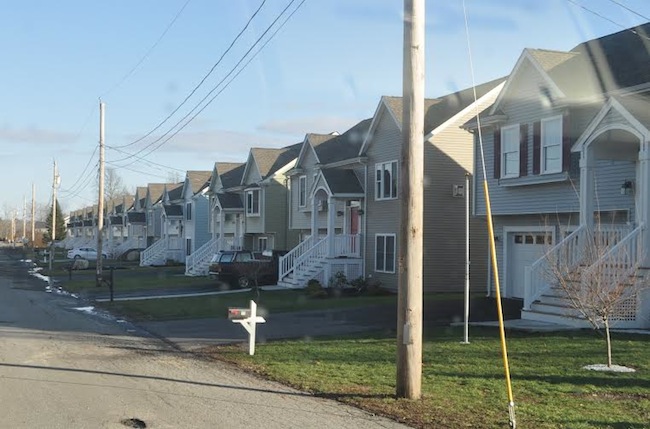
http://www.thebattery.org/projects/battery-urban-farm/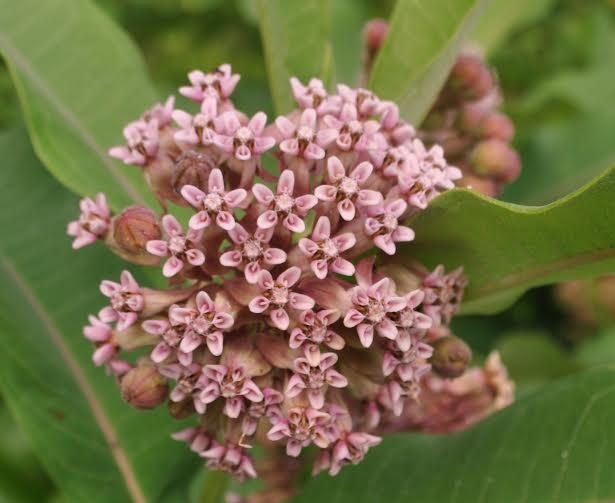
DON'T FEAR THE TICK – You are considerably larger and hopefully smarter (Part 2)
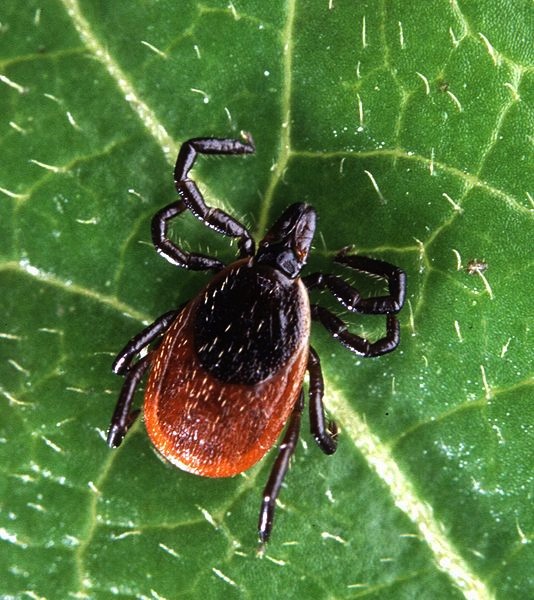
MAYBE HE COULDN'T FIND A STAMP?
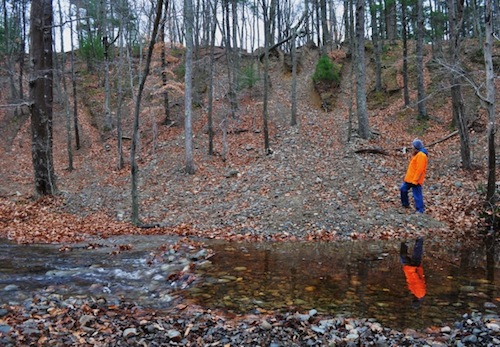
BIORESERVE FLORA OF THE MONTH – Prince's Pine/Princess Pine/Ground Pine (Lycopodium obscurum)
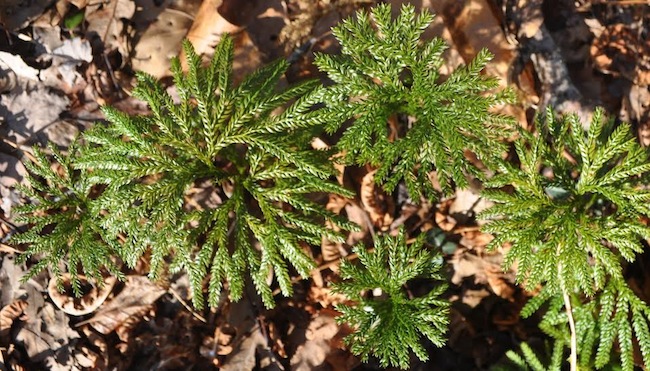
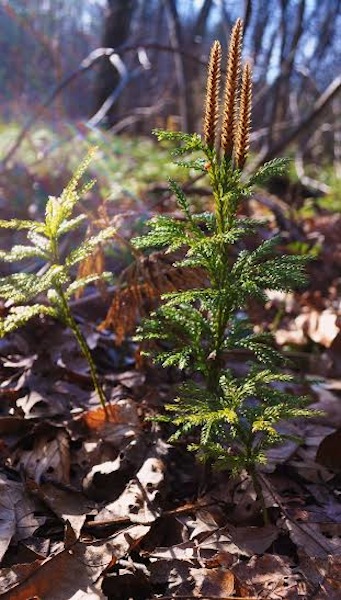
BIORESERVE FAUNA OF THE MONTH – Wood Frog (Lithobates sylvaticus)
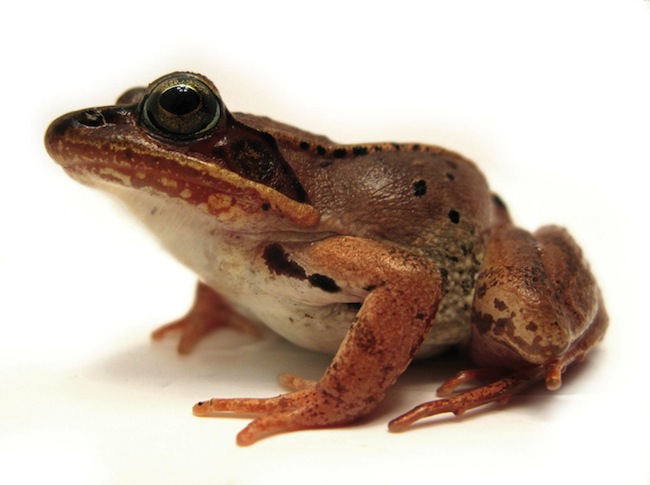
Photo – Dave Huth Flickr creative commonsTRUMP BUILDING HIS WALL? FALL RIVER SUPERMAX PRISON? BRUTALIST ARCHITECTURE ON STEROIDS?
What do you get when you cross UMass Dartmouth's Paul Rudolph architecture with Fall River's Government Center building? Answer: You get that concrete Amazon monstrosity seen when entering Fall River on Route 24.SPRING ARRIVES WITH MARCH, BUT WINTER USUALLY ACTS LIKE IT DOESN'T CARE
<Back

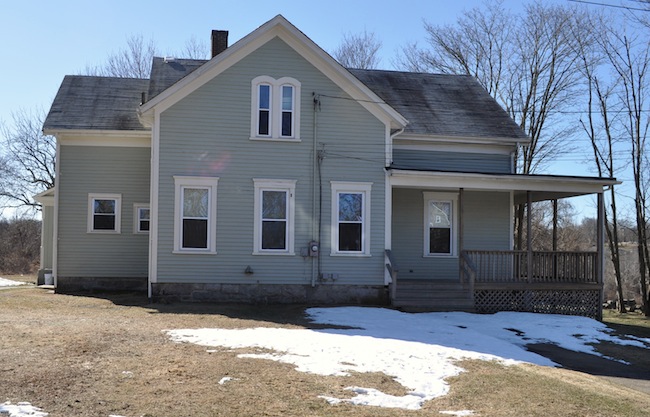


.JPG)
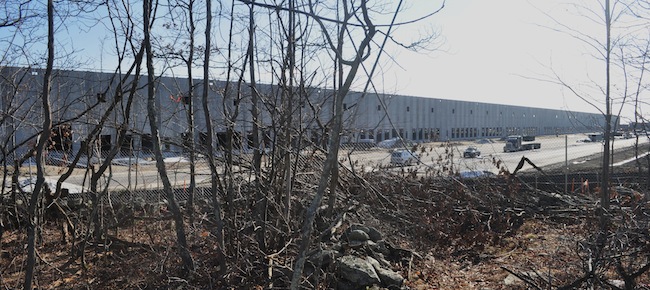
Social